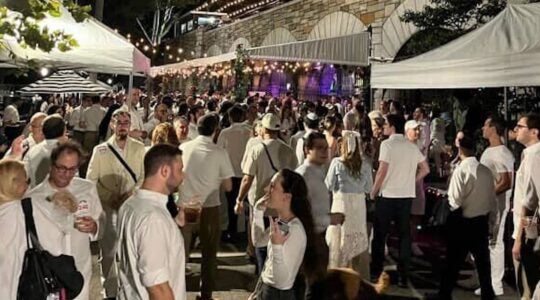An air of celebration accompanies the arrival of Purim. We read the story of how Mordecai and Esther saved the Jewish people, and shouts of “boo Haman!” can be heard throughout the synagogue. After the service a festival commences with eating, giving tzedakah, delivering packages to friends, and dressing up. But why the costumes?
There are four main reasons ideas and copying Halloween has nothing to do with them.
If we travel back in time and across the ocean, we will land in 13th-century Italy, where the mystery can be solved. According to an article in the Israeli newspaper Haaretz, the first record of Jews dressing up on Purim comes from 14th-century Italy, as cited by Jewish writer Kalonymus ben Kalonymus. But the seeds of this custom had been planted about 100 years earlier, almost by accident.
The Christian Italians had been partying wildly leading up to the beginning of Lent, the time period that precedes Easter. The Tuesday before Lent, known as “Fat Tuesday” or “Shrove Tuesday,” was especially wild, with celebrants dressing up and drinking. According to legend, one year “Fat Tuesday” and Purim fell near each other. With heavy drinking going on for both occasions, the celebrations began to mix. Italian Jews started a new tradition as they adopted the Christian custom of dressing up, and it spread to other Jewish communities worldwide.
However, the rabbis were not happy. They did not approve of dressing up, especially cross gender, because in the Bible it says, “A woman shall not wear anything that pertains to a man nor shall a man put on a woman’s garment” (Deuteronomy 22:5). Despite disapproving rabbis and the absence of Pinterest to look up DIY ideas, people continued to wear costumes.
Another idea about the source of masquerading stems from the fact that in the Book of Esther, which we read on Purim, God is never mentioned. The story about Mordecai and Esther saving the Jews from evil Haman seems to merely be a string of coincidences, with the right person in the right place at the right time. Instead, some rabbis argue that this is an example of how God has a hand in everything, even though God may appear hidden. Through the actions of the people in the Book of Esther, God’s work is hidden, which would explain why we hide ourselves behind costumes on Purim.
A third explanation honors Esther, who had to hide her Jewish identity to save the Jews — a sort of costuming.
A fourth and final reason why Jews might dress up on Purim is the preservation of dignity. In the past, beggars have been known to go around asking for money on Purim. Dressing up provided the poor with a way to hide their identity and preserve their dignity while still giving them the chance to ask for charity. We also know that drinking could be a part of the religious celebration even though the Talmud reminds people to drink responsibly. Theoretically being dressed up hides one’s identity when acting inappropriately while drunk.
While we may never know the exact reason why Jews dress up on Purim, we can know one thing for sure: It is so much fun! This year my friends and I are all wearing onesies (mine is an American flag onesie); we’re also assisting with our temple’s Purim carnival and supervising the young children. This Purim, look through your closet for costume ideas, dress up and enjoy! And don’t forget to indulge in hamantaschen.
I walked into the synagogue and am surrounded by other masqueraded people. I see a pirate, a fairy, and even the rabbi in costume! When I was little, Purim was an excuse to dress up again after Halloween, but now I see that it is a Jewish tradition with meaning and purpose. While we don’t go around house to house and say “trick or treat,” Purim holds a deep meaning. Victory, despite Haman’s plot to kill the Jews, reflects Jewish strength, wisdom and courage through Esther’s actions. Purim gives us the opportunity to celebrate these Jewish values.
Why do you think we dress up on Purim? Which reason do you agree with the most? What have you dressed up as in the past for Purim? We would like to know, so tell us down below.
The New York Jewish Week brings you the stories behind the headlines, keeping you connected to Jewish life in New York. Help sustain the reporting you trust by donating today.




